Sélectionnez ce type de licence lorsque vous développez une application pour iOS, Android ou Windows Phone et que vous intégrez le fichier de fonte dans le code de votre application mobile.
Alfarooq
par Eyad Al-Samman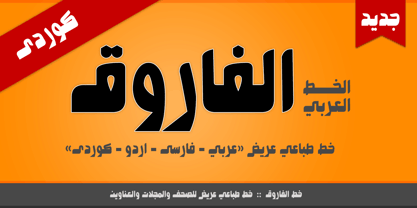
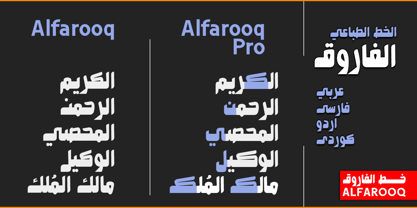
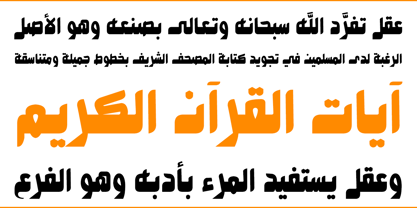

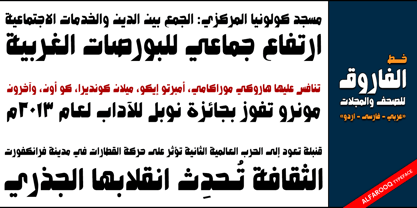
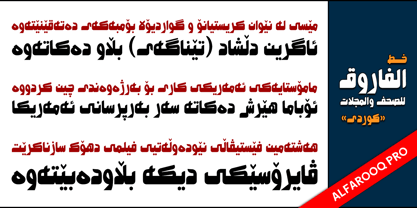
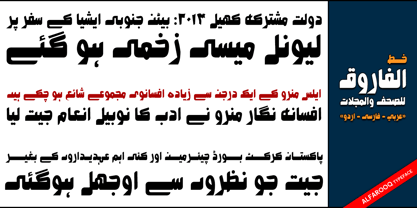
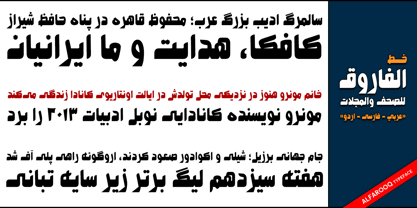
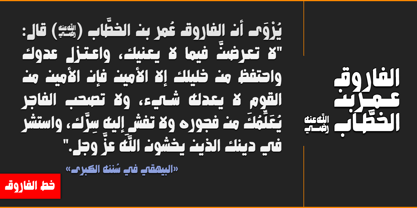
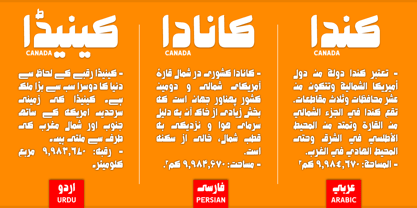
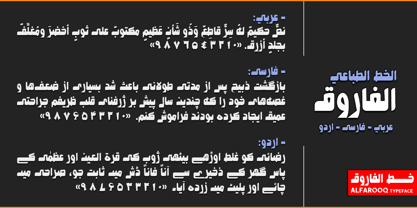
- AaGlyphs
-
Meilleure offreOffres familiales
- Styles individuels
- Spécifications techniques
- Licences
Par style :
$17.50
Paquet de 2 styles :
$35.00
A propos de la famille Alfarooq Police
Alfarooq est l'épithète la plus connue du personnage islamique Umar ibn al-Khattab (v. 586 - 644), compagnon de route et conseiller du prophète islamique Muhammad (que la paix soit avec lui), qui devint le deuxième calife musulman après la mort de Muhammad (que la paix soit avec lui) en 632. Les musulmans connaissent généralement Omar ibn Al-Khattab (qu'Allah soit satisfait de lui) sous le nom d'Alfarooq (c'est-à-dire celui qui connaît et distingue la vérité du mensonge).
Alfarooq est une police de caractères arabe unique, large et à gros titres. La principale caractéristique de ce caractère est la conception originale des queues de ses lettres et de ses points, ce qui en fait l'un des caractères modernes et élégants utilisés pour les titres et les manchettes. Cela peut être remarqué dans différentes lettres telles que Ain, Ghain, Jeem, Khah, Seen, Sheen, et d'autres. En outre, Alfarooq police dispose d'un jeu de caractères arabes qui prend en charge les lettres et les chiffres arabes, persans, kurdes et urdu, ainsi qu'une gamme limitée de ligatures arabes spécifiques. Ce caractère se décline en deux styles ultra-gras ( Alfarooq et Alfarooq-Pro) et plus de 430 glyphs distincts avec une seule graisse pour chaque style.
Le caractère Alfarooq offre diverses possibilités d'utilisation typographique et numérique, notamment pour les très grandes et larges affiches. En raison de sa forte ligne de base, le caractère Alfarooq convient aux titres des journaux, magazines et autres documents imprimés en arabe, persan, kurde et urdu. Il convient également avec élégance aux enseignes, couvertures de livres, panneaux publicitaires, noms de rues et de villes, noms de produits et de services, et titres de prospectus, de brochures et d'affiches. Le style étendu des caractères d'Alfarooq policelui confère une plus grande distinction lorsqu'il est utilisé pour les cartes de vœux, les couvertures, les panneaux d'exposition, les murs extérieurs ou intérieurs des centres commerciaux, ainsi que les sorties et les entrées des aéroports et des halls d'entrée.
Concepteurs : Eyad Al-Samman
Éditeur : Eyad Al-Samman
Fonderie : Eyad Al-Samman
Fonderie d'origine : unknown
Maître d'ouvrage : Eyad Al-Samman
MyFonts débout : 7 novembre 2013
À propos Eyad Al-Samman
Eyad Al-Samman est un auteur, conférencier, typographe et graphiste indépendant yéménite. Il est né à Sanaa, la capitale du Yémen, et y vit toujours. Eyad est titulaire d'une licence en génie électrique et informatique et d'une maîtrise en administration des affaires. Il travaille en tant qu'assistant dans des universités locales et des collèges communautaires yéménites. Il y enseigne la gestion et d'autres matières en anglais. Eyad travaille comme graphiste depuis 1999 et a découvert le monde magique de la typographie au milieu des années 2000. Sa première police de caractères est Loyolliams, qu'il a créée à la fin de l'année 2005. Son site polices est principalement utilisé pour la composition et la publication de différents textes, notamment en arabe, en persan, en ourdou, en kurde, en latin et en cyrillique. L'un des pangrammes qu'il a composés est le suivant (les messieurs cireux ont recouvert à la craie ma fabuleuse boutade), qui contient 34 lettres.
En savoir plus
Lire moins